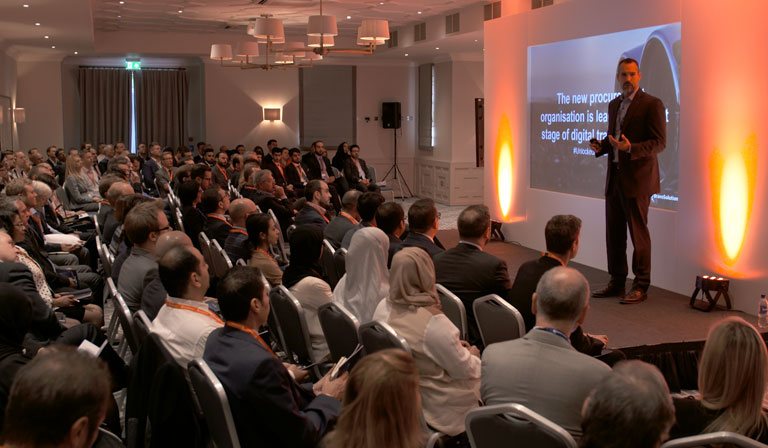On the surface, filming a presentation at a conference seems incredibly straightforward. You just need your video production crew to put a camera on a tripod at the back of the room, point it at the front and hit record, right?
Well, sometimes that can work – but to ensure you always get the best results possible, it’s important to try and provide information that will allow the crew to plan the most effective filming approach.
So what are the kind of things it’s helpful for us to know?
-
Your A/V team’s contact details
Clean, high quality audio is absolutely essential when filming a conference presentation. 9 times out of 10, you’ll have an A/V team at the venue operating a sound desk and managing microphones on the stage, so the best option is for our camera crew to connect to their sound desk via a cable. This avoids the speaker having to double up on microphones, or any conflict in equipment. A pre-conference call between the camera team and the A/V team is the simplest way to ensure that both parties are aware of what’s needed.
-
Number of presenters
Will there be more than one speaker talking at a time? Will there be a panel discussion? If so, this has implications for number of cameras, positioning of cameras, and approach to audio recording.
-
Presentation Slide Content
It’s useful to know a little bit about the slides being used by the presenter – how intricate and detailed are they; are there animations/videos involved? Are they in a format other than PowerPoint? Will the crew be able to get hold of the original PowerPoint files on the day so they can overlay slides on the footage? The answers to these questions may all affect the filming approach.
Of course not every presenter uses slides, and it’s useful to know if that’s the case as well.
-
Audience Involvement
Everyone loves an interactive presentation, with the exception of an unprepared camera crew. If there’s a great deal of audience involvement and you want to feature this in the video, then you need a minimum of 2 cameras, and need to consider how audio will be handled. A roving handheld or boom microphone is the most common solution; but you have to make sure you have people in position to move these microphones swiftly to where they are needed – otherwise people have a tendency to just shout out to the room. Fine for people who are in the room with them, but a problem for the edited video.
-
Lighting
A common misconception is that the biggest lighting challenge for the camera team is the amount of available light in a conference venue. In practice, the bigger problem is usually the contrast between a very bright screen and a dimly lit lectern or podium. Another thing we see regularly is a very narrow spotlight on the stage, which the presenter promptly steps outside and then delivers the rest of his presentation from the shadows. There are various ways to deal with these issues, but knowing whether they may happen allows us to come prepared.
-
Room Layout
Particularly for multi-camera shoots, the layout of the room is very useful to know so that camera positions can be considered, as well as the freedom of movement for individual cameras. If time permits, a pre-shoot location recce where the room is set up as it will be on the day is the best way to do this.
Having an idea of the above will make sure you’re best prepared to get top quality results when filming presentations.
If you would like to discuss how Dead Ready Productions could help you to further enjoy the benefits of video for your business, please get in touch via the button below or by calling +44 (0)208 339 6139.

